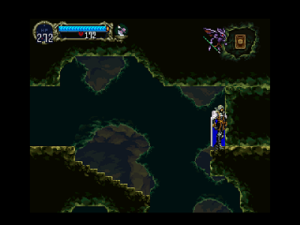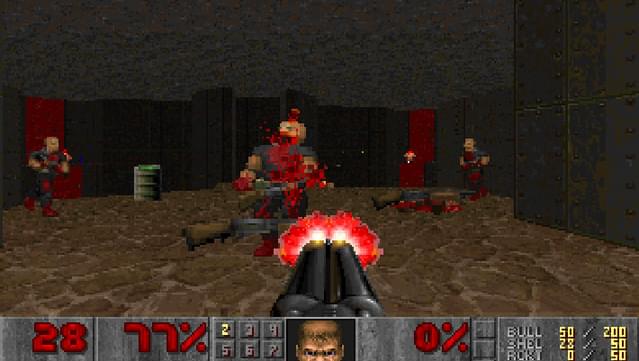Unit 6 - Critical Approaches
Unit 6 - Critical Approaches
The player and the audience.
Research, audience profiling.
Qualitative and quantitative audience research.
Qual: Information that revolves around feelings and behaviours.
Quant: Numerical/statistic information.
Demographics?
Age
Gender
Education
Nationality
Race
Ethnicity
Religion
Sexual Orientation
Psychographics?
Meaning: Qualitative information based on attitudes, tastes, personality, preferences and aspirations
Bartle's Taxonomy of player types (like a deck of cards):
1. Achievers (Diamonds)
Need goals and challenges in games.
Solving Puzzles.
Game Example: Dark Souls

I chose Dark Souls to represent the achievers since it is a game that is all about giving the player a sense of satisfaction and reward whenever they get past a certain area or defeat a certain boss, and it invokes a feeling of tension by making the player scared of losing lots of progress. This is all achieved through the game's difficulty and challenge alone.
2. Explorers (Spades)
Curious by nature. Like to discover things.
Aesthetics, Secrets, Fictional World, Narrative.
Game Example: Castlevania: Symphony of the Night

I chose Castlevania: SotN to represent the explorers since the game itself is an open-world 2D platformer in which there are varied areas to explore with lots of secrets and hidden items in the game that are usually found through pure curiosity.
3. Socialisers (Hearts)
Want a feeling of fellowship, to be part of a group.
Community, Creation and Building.
Game Example: VRChat

I chose VRChat to represent the socialisers since the game does not really have any main drives whatsoever and is more so a game that is all about expression, doing any fun activity you want and meeting other people.
4. Killers (Clubs)
4. Killers (Clubs)
Just likes destruction, destroying other people and imposing themselves.
Escaping the Real World, Fictional World.
Game Example: Doom

I chose Doom to represent the killers since the game's tone has a high emphasis on violence and destruction, which makes up the game's charm and serves as its main method of stimulation thanks to the game's fast pace, enemy layouts and variation in weaponry and tactics.
Le Blanc's Taxonomy of pleasures.
1. Sensation
Aesthetics.
2. Fantasy
Fictional World.
3. Narrative
Unfolding Story.
4. Challenge
Solving Puzzles.
5. Fellowship
Community.
6. Discovery
Secrets.
7. Expression
Creation and Building.
8. Submission
Escaping the Real World.
SES:
Low - Sport and Console
High - ? and PC
Low SES - Correlates to low academic achievement, poverty, poor health
Inequities
Girls are rejected from being identified as gamers. => Half of the gaming population
Boys - Ego, aggressive, overly-sexualised content
Corporate/Learning gamer
Schools - Education and Technology
Games create an engaging and motivational environment.
Big tech firms:
fb Free
Whatsapp
ITU
Internet:
10 years ago, 20% of humans used it. Now it has increased to around 50%.
Misinformation
VR:
Demographics (Race)
Closing SES gap
Creators - These are the people who produce the games.
Demographic
Average Age Range: 30-34 years old
Gender: Mostly male
Ethnicity: May be white or Asian
Social Class: Middle/upper-middle
Occupation: Making games
Education level: Has a degree.
Synthesizers - These are the people who take the games produced by the creators and improve/modify them.
Demographic
Average Age Range: 20-29 years old
Gender: Mostly male
Ethnicity: May be white or Asian
Social Class: Middle/upper-middle
Occupation: Freelancing
Education level: May still be in college/university
Consumers - These are the people who buy and play the games.
Demographic
Average Age Range: 3+ years old
Gender: Mostly female
Ethnicity: Varied
Social Class: Varied
Occupation: May have a part-time/day job
Education level: Depends on age.
Guided story experience - Half-Life

Parameter-based construction - LittleBigPlanet

Blank Template - Forge Mode (recurring feature in the Halo series of games)

Ex-Nihilo - Star Citizen

Player: Cultural competence
Culture
Pattern of behaviour, ethnicity and social group (representation)
Thoughts
Comms
Actions
Customs
Beliefs
Values
We must:
1. Value diversity
2. Capacity cultural assessment.
3. When cultures interact...
Conscious dynamics
4. Institutionalised cultural knowledge.
5. Adapt to culture
'Mission to Iraq'
Home of the Iraqi's. Local customs
Relationship with other cultures.
Innuit rubs noses.
Game responses
Negotiated
Own values & opinions, are applied to that game.
Story affected by player. However, story can affect player.
2 way street.
Example: Persona 5
https://www.youtube.com/watch?v=zS01x4Vuo1w
I chose Persona 5 since you can choose different dialogue choices at different points in the game that affect the responses from other characters and immerse the player, but the events of the game may also affect the attitudes the player has to those choices.
Preferred
What the public will take from the game. (e.g: Ideal World, Marcus Fenix).

Oppositional
Player will oppose the game
Pitch Perfect. Fat Amy.
Inappropriate... ?
Example: Street Fighter II
The communist logo (the hammer and sickle) is on the ground in this shot, which may be offensive to Russians. May fall under racism.
Participatory
Encourage the player to level up.
Clear path, limited tools, awareness of next level.
Key for a door?
Culture
Differences
& need to be accurate
Fan culture
Can affect a game
Can affect lifestyle choices of the player
Content made by fans of a piece of media
What can you purchase?
Merchandise
Fan club name?
Varies, may or may not have a name
Social aspect?
Friendly and a means of coming together, but can get quite toxic at times. Can have meet-ups online or in real life (usually at conventions).
Creators - These are the people who produce the games.
Demographic
Average Age Range: 30-34 years old
Gender: Mostly male
Ethnicity: May be white or Asian
Social Class: Middle/upper-middle
Occupation: Making games
Education level: Has a degree.
Synthesizers - These are the people who take the games produced by the creators and improve/modify them.
Demographic
Average Age Range: 20-29 years old
Gender: Mostly male
Ethnicity: May be white or Asian
Social Class: Middle/upper-middle
Occupation: Freelancing
Education level: May still be in college/university
Consumers - These are the people who buy and play the games.
Demographic
Average Age Range: 3+ years old
Gender: Mostly female
Ethnicity: Varied
Social Class: Varied
Occupation: May have a part-time/day job
Education level: Depends on age.
Guided story experience - Half-Life
Parameter-based construction - LittleBigPlanet

Blank Template - Forge Mode (recurring feature in the Halo series of games)

Ex-Nihilo - Star Citizen

Player: Cultural competence
Culture
Pattern of behaviour, ethnicity and social group (representation)
Thoughts
Comms
Actions
Customs
Beliefs
Values
We must:
1. Value diversity
2. Capacity cultural assessment.
3. When cultures interact...
Conscious dynamics
4. Institutionalised cultural knowledge.
5. Adapt to culture
'Mission to Iraq'
Home of the Iraqi's. Local customs
Relationship with other cultures.
Innuit rubs noses.
Game responses
Negotiated
Own values & opinions, are applied to that game.
Story affected by player. However, story can affect player.
2 way street.
Example: Persona 5
https://www.youtube.com/watch?v=zS01x4Vuo1w
I chose Persona 5 since you can choose different dialogue choices at different points in the game that affect the responses from other characters and immerse the player, but the events of the game may also affect the attitudes the player has to those choices.
Preferred
What the public will take from the game. (e.g: Ideal World, Marcus Fenix).

Oppositional
Player will oppose the game
Pitch Perfect. Fat Amy.
Inappropriate... ?
Example: Street Fighter II
The communist logo (the hammer and sickle) is on the ground in this shot, which may be offensive to Russians. May fall under racism.
Participatory
Encourage the player to level up.
Clear path, limited tools, awareness of next level.
Key for a door?
Culture
Differences
& need to be accurate
Fan culture
Can affect a game
Can affect lifestyle choices of the player
Content made by fans of a piece of media
What can you purchase?
Merchandise
Fan club name?
Varies, may or may not have a name
Social aspect?
Friendly and a means of coming together, but can get quite toxic at times. Can have meet-ups online or in real life (usually at conventions).
Passive
- Accepting opinions
- Paying little attention
- Watching a game
- Example: Getting Over It with Bennett Foddy
- Forming opinions
- Full engagement
- Playing the game
- Example: Dark Souls
Orson Welles
Mass Media Broadcast.
Aliens have landed at a location and are murdering humans.
Propaganda
Hypodermic Needle Model Theory (a.k.a: Magic Bullet)
Injects thoughts...
Triggering audience response.
Passive or active same response

Swastika - original form as a Buddhist/Hindu symbol of peace
Diagram:

Game Trailer example:
Bloodstained: Ritual of the Night
Semiotics
Shirt, haircut, tattoos, dress (mise en scene)
Decoding symbols.
Every cultural activity produces a blip on the Richter scale. Trace of meaning
Red phone - Emergency phone.
Game example: Half-Life 2, Civil Protection (below on left) look like aliens with breathers, but are actually humans trying to gain benefits. Overwatch elites (below on right) chosen by the Civil Protection on the other hand, wear white armour with a skull symbol on their left arms, red shoulder pieces on their right arms along with single red eyes on their helmets to portray them as unique, powerful individuals with authorities.

Game example 2: Persona 5, The palaces (main dungeons) in the game are all based around the cognition of the villainous people in the real world who's "shadow selves" rule them (e.g: the first palace in the game is a castle containing giant female dressing mannequin torsos for columns since the ruler is a perverted gym teacher who abuses his volleyball team to cover up his sexual harassment of female students in the school).
Game example 3: Portal 1 and 2, The game's hi-tech laboratory aesthetics conveys a lab-rat mentality in the player that compliments the game's puzzle-solving.

Violence theory
The act of causing physical harm/damage to people/things.
3+ - Suitable for everyone
7+ - The game contains content that could be potentially frightening to very young children.
12+ - The game is still somewhat child-friendly, but is more mature and adult themes and innuendo are more frequent.
16+ - The game is very mature and contains many instances of violence, sex, etc, but it is still within a reasonable amount.
18+ - The game's mature themes are taken to gross extremes.
Source: https://pegi.info/
Playing violent video games increases aggressive behaviour.
Psychological, arousal and aggressive thoughts and feelings. Decreases pro-social behaviour.
Unclear - Video games cause violence and murder.
Social learning - assumes the mind cannot differentiate difference, Physical and TIAG.
Did not cite sources of data. Aggression and violence in video games less than TV.
Catharsis Hypothesis:
Natural biological drive, requires release.
Desire to mate. Can prime aggression.
Displaced through activities (e.g: Sports, walking, real-life social interaction, exercise, reading a book)
Aggression decreases when video gaming over time. Helps cope with stress.
Mood Management:
Choose media to fit their current mood. Goal is to improve it.
Regretful -> Violent media
Depression -> pre-cursors, helplessness
Game characters:
You feel:
Do humans alleviate depression in the real world or in video games?
Gamers violent long time (years)
Decreases in hostile feelings and depression
Crime never correlates to video game violence.
Desensitisation - Crime, except you never commit it.
Overt action
Game-related murder case 1: James Holmes, a frequent World of Warcraft player who went on a rampage in an Aurora, Colorado film theater showing The Dark Knight Rises in 2012.
Game-related murder case 2: Jacob Tyler Roberts was a person who played many violent games which lead to him going on a rampage that mirrors an extremely violent GTA scene.
Game-related murder case 3: Jose Reyes (aged 12) had been spending months watching gameplay of extremely violent games, which led him to shoot a teacher, two other students and himself with a semi-automatic handgun at Sparks Middle School.
Source: https://www.charismanews.com/culture/52651-14-mass-murders-linked-to-violent-video-games
Sex:
Sexually objectified characters
E.g: Lara Croft detail & Male detail
Arousal/hedonic valence model theory (disgusted at content)
Human exposure to character leads to aggression
Likely males condone negative stereotypes.
G.L.M - (General Learning Model)
Human's cognitive function
This explains reaction to sex and violence in games.
Lara Croft: Wears skin-tight clothing, wields guns. Depicted as a strong woman.
Nathan Drake: A few instances of Nate being topless. Also wields guns.
--------------------------------------------------------------------------------------------------------------------------
Essay:
Min. of 500 words, max of 1000 words
Study of Player/audience
Cultural competence
Sex
Violence
Fan culture
Taxonomies
Synthesisers, creators, etc.
Player types
SES
Fan culture
You need examples of these
Examples of:
https://www.forbes.com/sites/olliebarder/2019/02/15/new-study-shows-that-there-is-no-link-between-violent-video-games-and-aggression-in-teenagers/
This article explains that data has been found that disproves claims that video game violence does not cause teenage aggression. The article brings up a study put together by the Oxford Internet Institute and Oxford University and references some quotes from it, and also says that it is not the only study that has disproved such claims.
Study of sex in video games:
https://www.realclearscience.com/articles/2015/07/04/the_link_between_sex_and_video_games_109297.html
This article discusses the ways in which sexual intercourse has been represented in video games. The article brings up some examples that the writer considers to be good, such as God of War and The Last Of Us Part II, as well as examples that they consider to be bad, such as Custer's Revenge.
Study of gaming audiences:
https://www.wilsoncenter.org/blog-post/understanding-gaming-audiences
Essay structure:
Paragraphing
Leading and Kerning
References (books, journals, etc.)
Images
(Proof reading)

Game example 2: Persona 5, The palaces (main dungeons) in the game are all based around the cognition of the villainous people in the real world who's "shadow selves" rule them (e.g: the first palace in the game is a castle containing giant female dressing mannequin torsos for columns since the ruler is a perverted gym teacher who abuses his volleyball team to cover up his sexual harassment of female students in the school).

Game example 3: Portal 1 and 2, The game's hi-tech laboratory aesthetics conveys a lab-rat mentality in the player that compliments the game's puzzle-solving.

Violence theory
The act of causing physical harm/damage to people/things.
3+ - Suitable for everyone
7+ - The game contains content that could be potentially frightening to very young children.
12+ - The game is still somewhat child-friendly, but is more mature and adult themes and innuendo are more frequent.
16+ - The game is very mature and contains many instances of violence, sex, etc, but it is still within a reasonable amount.
18+ - The game's mature themes are taken to gross extremes.
Source: https://pegi.info/
Playing violent video games increases aggressive behaviour.
Psychological, arousal and aggressive thoughts and feelings. Decreases pro-social behaviour.
Unclear - Video games cause violence and murder.
Social learning - assumes the mind cannot differentiate difference, Physical and TIAG.
Did not cite sources of data. Aggression and violence in video games less than TV.
Catharsis Hypothesis:
Natural biological drive, requires release.
Desire to mate. Can prime aggression.
Displaced through activities (e.g: Sports, walking, real-life social interaction, exercise, reading a book)
Aggression decreases when video gaming over time. Helps cope with stress.
Mood Management:
Choose media to fit their current mood. Goal is to improve it.
Regretful -> Violent media
Depression -> pre-cursors, helplessness
Game characters:
You feel:
- Powerful
- Like a bada**
- In control
Do humans alleviate depression in the real world or in video games?
Gamers violent long time (years)
Decreases in hostile feelings and depression
Crime never correlates to video game violence.
Desensitisation - Crime, except you never commit it.
Overt action
Game-related murder case 1: James Holmes, a frequent World of Warcraft player who went on a rampage in an Aurora, Colorado film theater showing The Dark Knight Rises in 2012.
Game-related murder case 2: Jacob Tyler Roberts was a person who played many violent games which lead to him going on a rampage that mirrors an extremely violent GTA scene.
Game-related murder case 3: Jose Reyes (aged 12) had been spending months watching gameplay of extremely violent games, which led him to shoot a teacher, two other students and himself with a semi-automatic handgun at Sparks Middle School.
Source: https://www.charismanews.com/culture/52651-14-mass-murders-linked-to-violent-video-games
Sex:
Sexually objectified characters
E.g: Lara Croft detail & Male detail
Arousal/hedonic valence model theory (disgusted at content)
Human exposure to character leads to aggression
Likely males condone negative stereotypes.
G.L.M - (General Learning Model)
Human's cognitive function
This explains reaction to sex and violence in games.
Lara Croft: Wears skin-tight clothing, wields guns. Depicted as a strong woman.
Nathan Drake: A few instances of Nate being topless. Also wields guns.
--------------------------------------------------------------------------------------------------------------------------
Essay:
Min. of 500 words, max of 1000 words
Study of Player/audience
Cultural competence
Sex
Violence
Fan culture
Taxonomies
Synthesisers, creators, etc.
Player types
SES
Fan culture
You need examples of these
Examples of:
Player/audience theoryPreferredOppositionalParticipatoryCultural competenceFan cultureViolence theory in gamingSex culturee.g: Links, books, journalsSemiotics
https://www.forbes.com/sites/olliebarder/2019/02/15/new-study-shows-that-there-is-no-link-between-violent-video-games-and-aggression-in-teenagers/
This article explains that data has been found that disproves claims that video game violence does not cause teenage aggression. The article brings up a study put together by the Oxford Internet Institute and Oxford University and references some quotes from it, and also says that it is not the only study that has disproved such claims.
Study of sex in video games:
https://www.realclearscience.com/articles/2015/07/04/the_link_between_sex_and_video_games_109297.html
This article discusses the ways in which sexual intercourse has been represented in video games. The article brings up some examples that the writer considers to be good, such as God of War and The Last Of Us Part II, as well as examples that they consider to be bad, such as Custer's Revenge.
Study of gaming audiences:
https://www.wilsoncenter.org/blog-post/understanding-gaming-audiences
Essay structure:
Paragraphing
Leading and Kerning
References (books, journals, etc.)
Images
(Proof reading)
Skim reading:
This article explains that data has been found
that disproves claims that video game violence does not cause teenage
aggression. The article brings up a study put together by the Oxford Internet
Institute and Oxford University and references some quotes from it. It also
says that it is not the only study that has disproved such claims.



Comments
Post a Comment